The best 3-day routes along the Catalan coastline
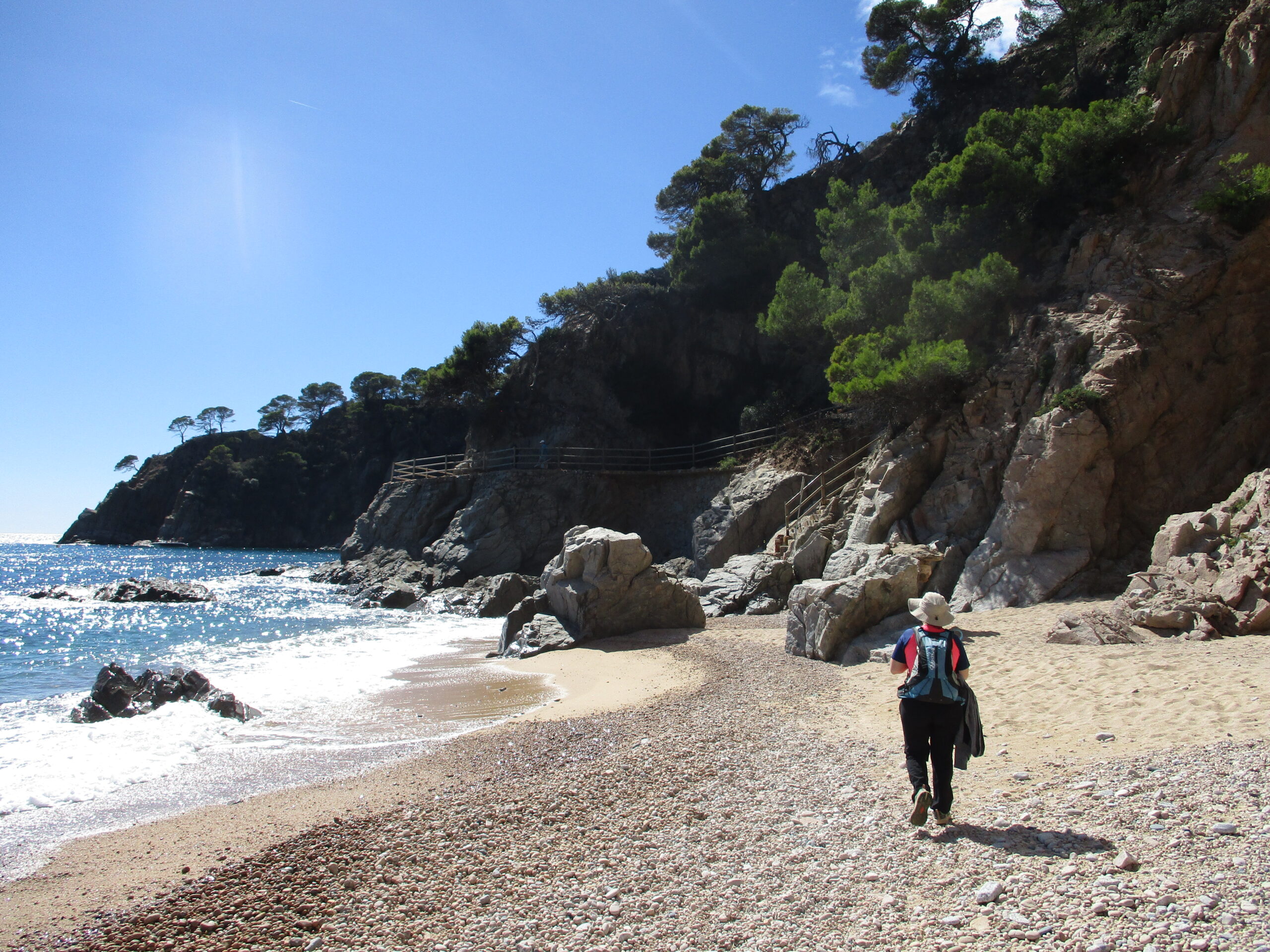
Since time immemorial, the coast has been crisscrossed by paths used for communication between coastal towns or as escape routes from shipwrecks. They have been dotted with watchtowers to guard against possible pirate attacks, or used as the emblematic coastal path, day and night, by the Guardia Civil and smugglers.
You may think that the Catalan coast is overcrowded and touristy, but nothing could be further from the truth. In its 580 km length, from Cap de Creus to the Ebro delta, we can find steep, rocky stretches with small coves interspersed between the cliffs, as in the well-known Costa Brava; dune fields with delta lagoons, as at the mouth of the Ter; low coasts formed by the sedimentary contribution of the rivers, such as the fantastic Ebro delta; or the coast of the Maresme, among many other attractions.
And that's not counting the strip of mountains along the coast: the limestone massifs of Montgrí and Garraf, the dense cork oak forests of Montnegre and Corredor, les Gavarres and the Ardenya massif, the deltaic views of the Montsià mountain range and the natural spaces of Marina, Collserola and Ordal, just a stone's throw from the media-rich Barcelona.
In this article, we suggest five proposals for the history and nature of these paths.

5 proposals for trekking in 3 days along the Catalan coast.
Proposal 1: GR92 and the Costa Dorada in Tarragona.
Type of route: linear.
Home: L'Hospitalet de l'Infant.
Final: Ampolla de Mar (lo Goleró).
– Stage 1: From L'Hospitalet de l'Infant to Ametlla de Mar.
– Stage 2: From Ametlla de Mar to Ampolla de Mar.
– Stage 3: From Ampolla de Mar to "lo Goleró" (round trip).
This route, close to the Mediterranean Sea, runs along low cliffs and mostly gravel beaches, protected by brownish or greyish conglomerates. Along the route we will be accompanied by bushy vegetation and some pine trees in the terrestrial part and underwater vegetation dominated by posidonia, which we will be able to observe in the many coves that dot our route.
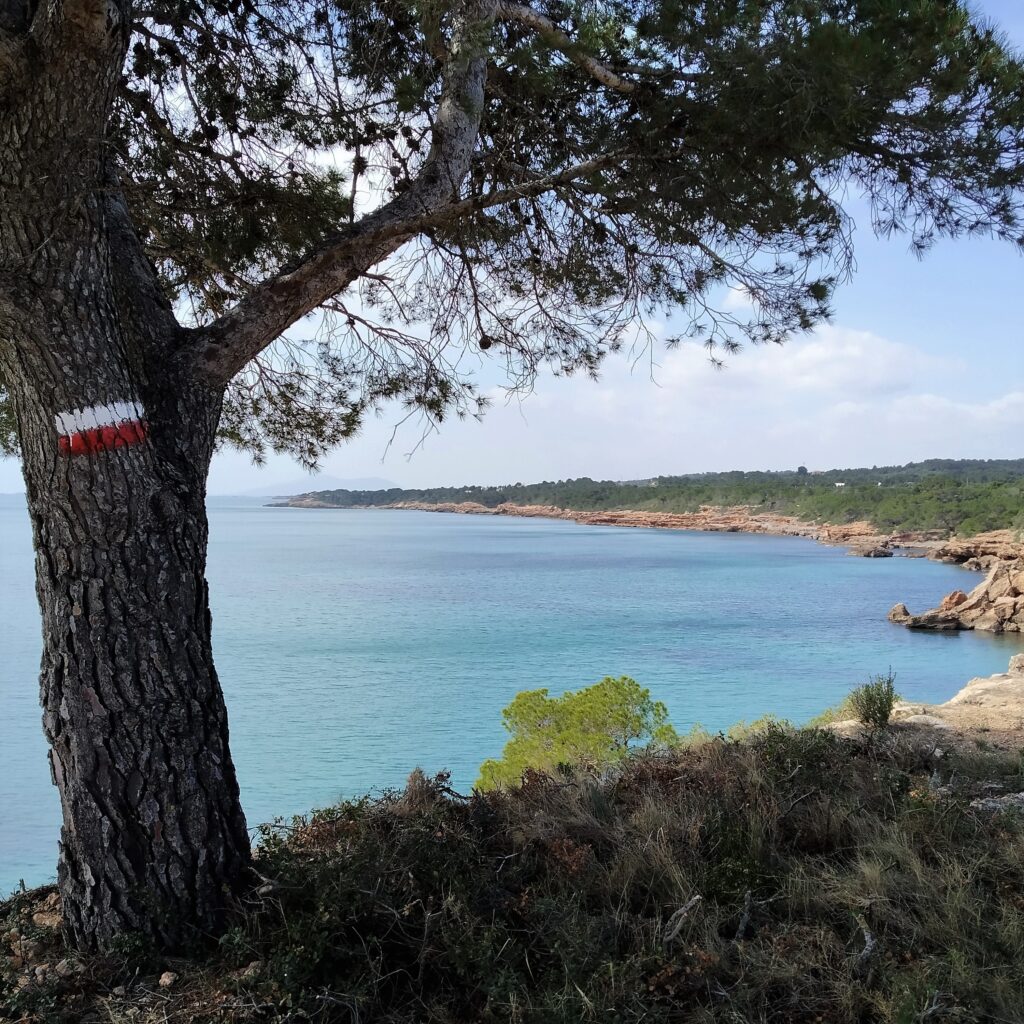
Stage 1: From L'Hospitalet de l'Infant to Ametlla de Mar.
Route between two train stops on the R16 line (web rodalies de Catalunya). It coincides with the stage 28 from GR 92. In just over 23 km we will travel along a fantastic stretch of coastline, with the only notable geographical feature being the Punta de les Rojales, a small hill at the beginning of the route.
Stage 2: From Ametlla de Mar to Ampolla de Mar.
Stage 29 from GR 92 which runs along a stretch of coastline, mostly undeveloped, also between two train stops. A little more than 17 km with constant ups and downs, which will take us to see remains of the civil war, coastal lagoons, viewpoints and photogenic rocks.
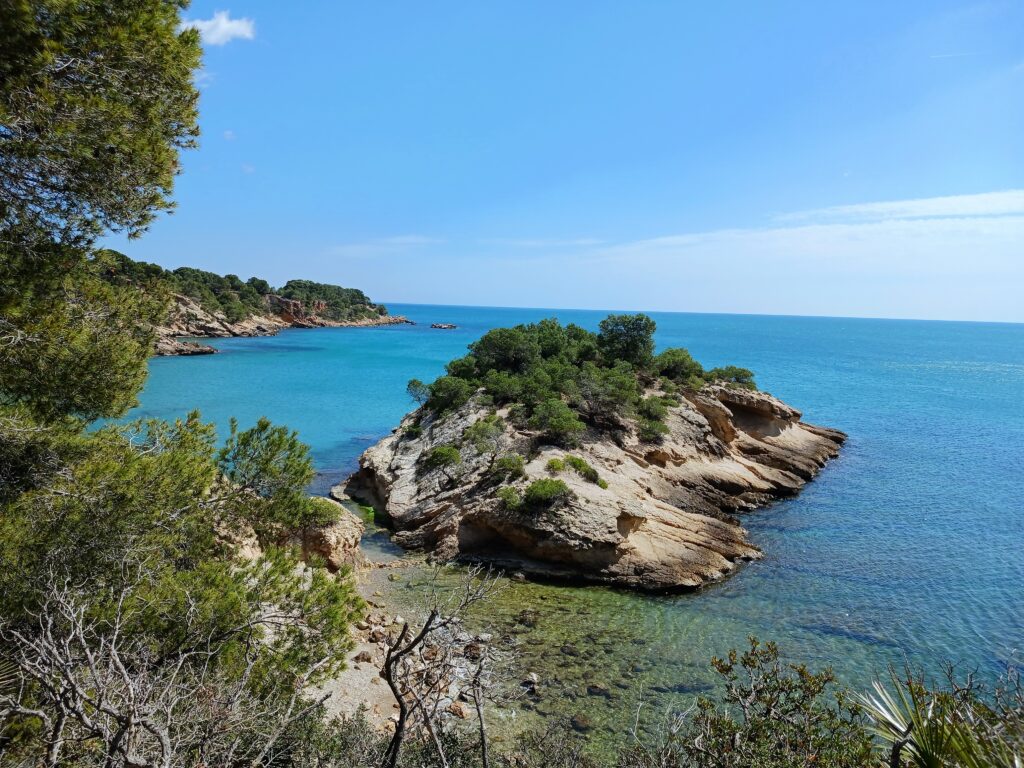
Stage 3: From Ampolla de Mar to "lo Goleró" (round trip).
Short foray into the northern part of the Ebro Delta. We will walk through a much flatter coastal landscape than in the two previous stages along the Arenal beach. We will go around the "Bassa de les Olles"where we will be able to observe various species of birds.
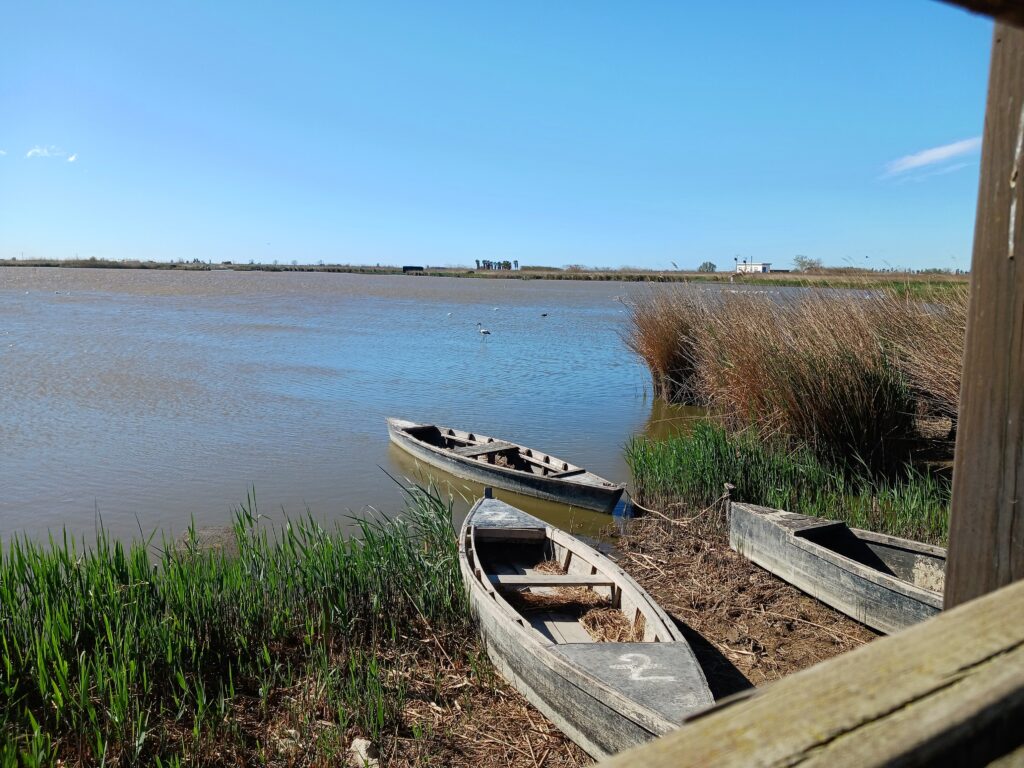
Proposal 2: The Ebro delta and the Montsià mountain range.
Type of route: independent routes.
– Route 1: Ascent to the "Foradada" of Montsià.
– Route 2: Walking along the Fangar point to the lighthouse.
– Route 3: The mouth of the Ebro and the Garxal lighthouse.
The Ebro Delta is the product of the sediments that the river has been dragging along day by day, forming a flat structure with its characteristic arrow shape. Dotted with villages, lagoons, rice fields, irrigation channels... We suggest three routes by car to get in touch with this natural space that will not leave you indifferent.
Route 1. Ascent to the "Foradada" of Montsià.
Circular route of about 10 km starting from the "Els Alseres".Mundana's lleure area".. The spectacular part of the route is the ascent along a rocky section that allows us to contemplate the whole delta, until we reach "la Foradada. From inside this rocky hole we can see a large part of the delta. The descent will surprise us with a very shady holm oak grove and the curious source of the Burgar.
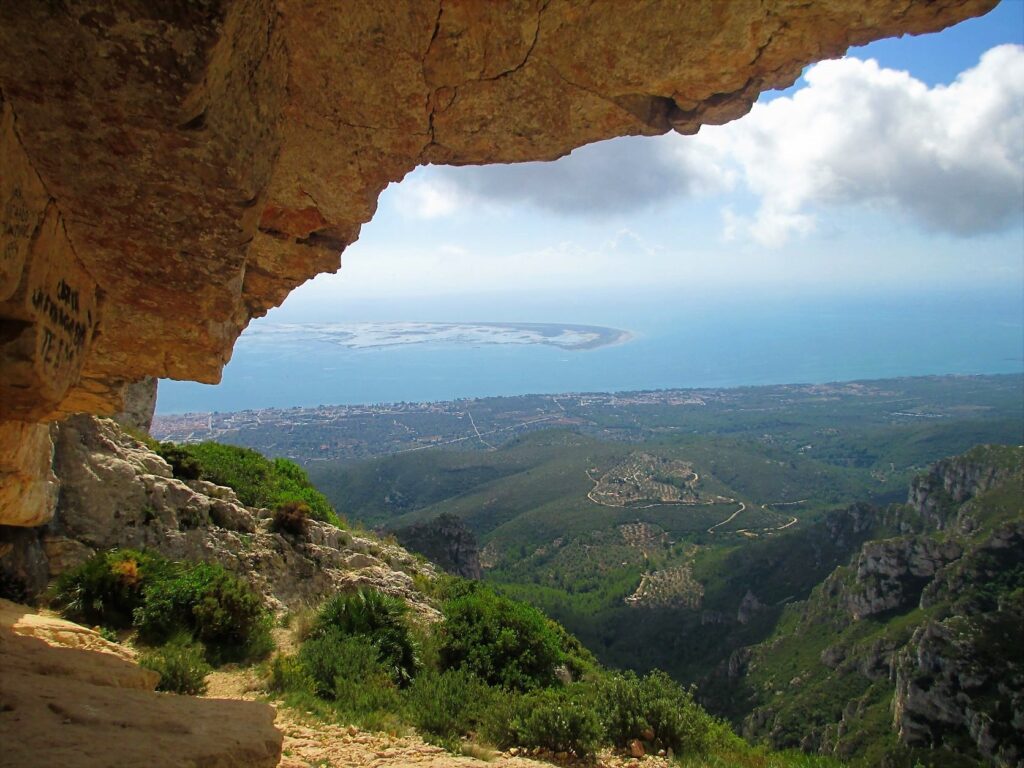
Route 2. Along the Fangar point to the lighthouse.
Our route starts at the "Mas dels Bascos"(restaurant located in the Marquesa Beachat the end of the road. TV-3451). It is about 4 km along the Fangar point that allows us to reach the photogenic lighthouse of the same name. We will have to return by the same route.
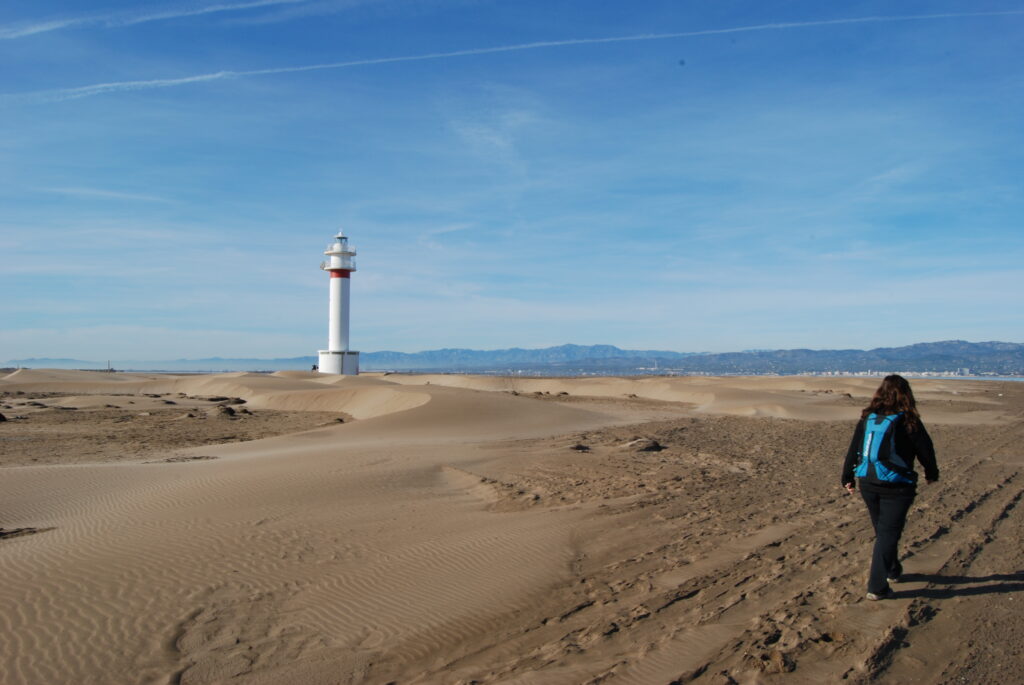
Route 3. The mouth of the Ebro and the Garxal lighthouse.
We start from the Riumar housing estatefrom where we will go through a dune area following the GR 99 until we reach the Ziggurat lookout o Garxal lighthouselocated at the mouth of the Ebro with views of the islands of Buda and Sant Antoni. To complete the little more than 7 km of the route, we will go to find the path that will take us to the "estany les Illes" and to the starting point.

Proposal 3: Central coast and coastal mountain ranges of Barcelona.
Type of route: linear.
Home: Sitges.
Final: L'Hospitalet de Llobregat (Bellvitge Hospital metro stop).
– Stage 1: GR 92 between Sitges and Garraf.
– Stage 2: from Garraf to Gavà, via Morella.
– Stage 3: from Gavà to the Llobregat river, through the Ordal cherry trees.
With these three stages through Barcelona, you'll have a bit of everything. The first part is dominated by demanding climbs, solitude and the open landscapes of the GarrafThe second part of the route takes in the viewpoints, coves and remains of the history that has left its mark on this limestone massif. The second part through the Ordal Mountains is gentler, with its cherry trees, almond trees, pine groves and some villages. And the third part, through the agricultural area and a gentle route along the Llobregat river.
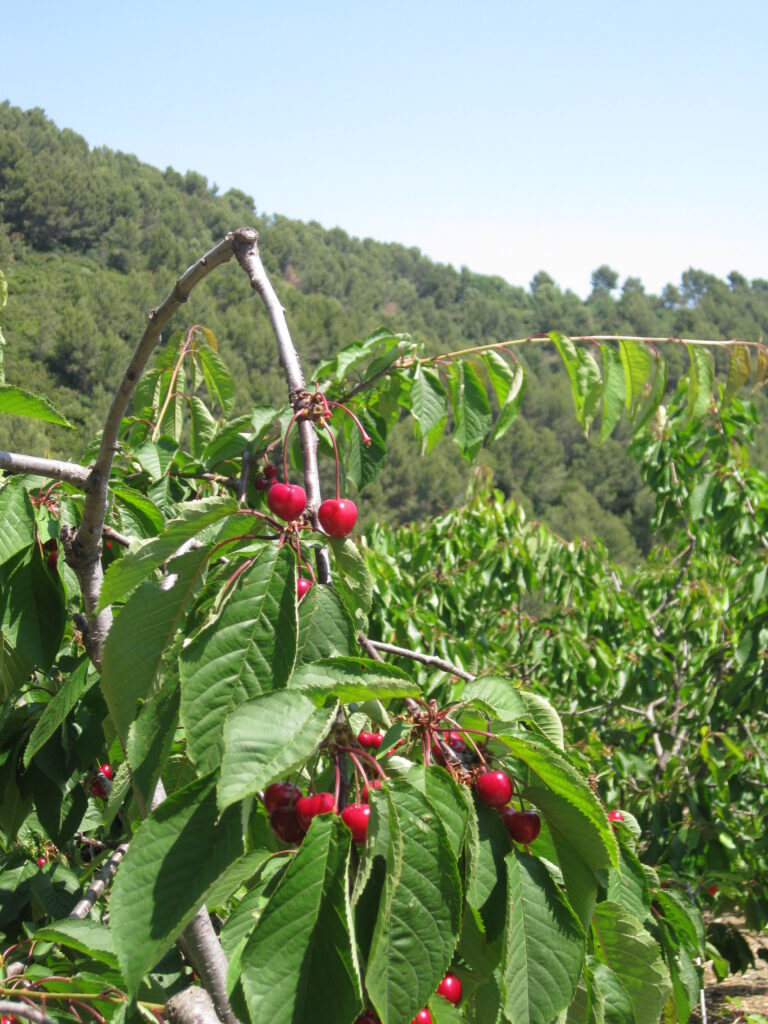
Stage 1: GR 92 between Sitges and Garraf.
This section, almost 15 km long, of stage 22 of the GR92, will allow us to get to know the curious white hermitage of the Trinitat and the small nucleus of houses in CampdàsensWe will walk through the limestone massif between pines, palm trees, vines, kermes oaks, fig trees... We will walk through the limestone massif among pines, palmettos, vines, kermes oaks, fig trees... that will lead us to the small village of Garraf with its characteristic cove.
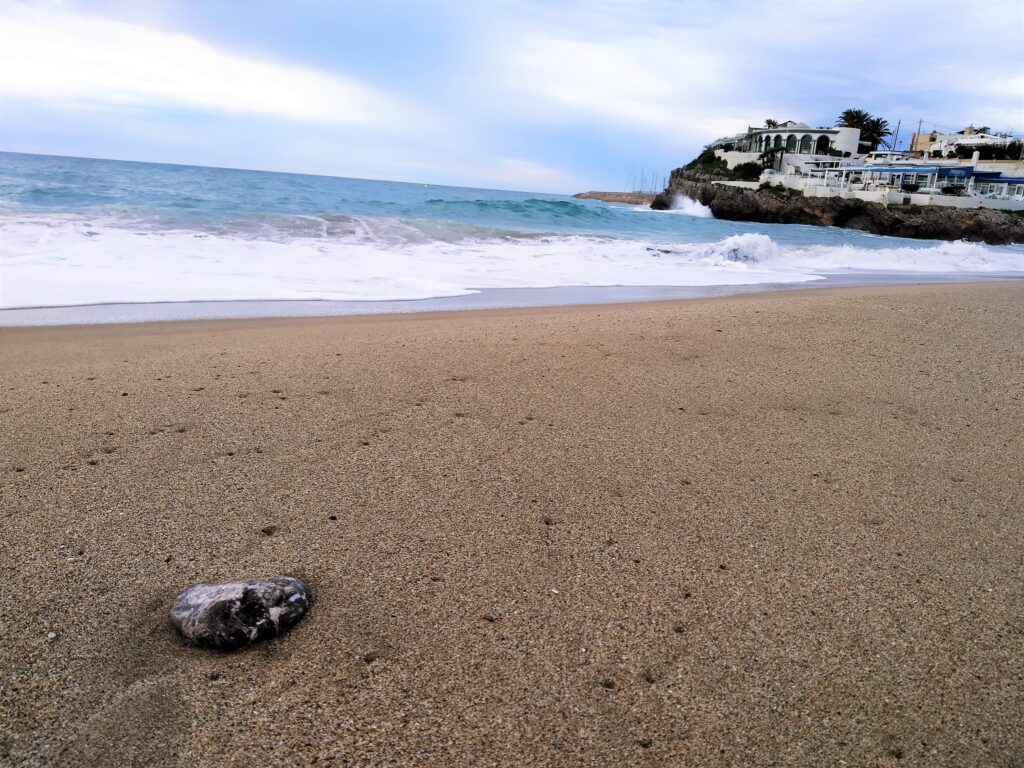
Stage 2: from Garraf to Gavà, through Morella.
A demanding route of 24 km over limestone terrain, starting from sea level, will allow us to cross the "encajonado".Vallgrassa fund"The route takes you to the top of the massif at almost 600 metres and descends through a mosaic landscape of crops and forest to the town of Gavà.
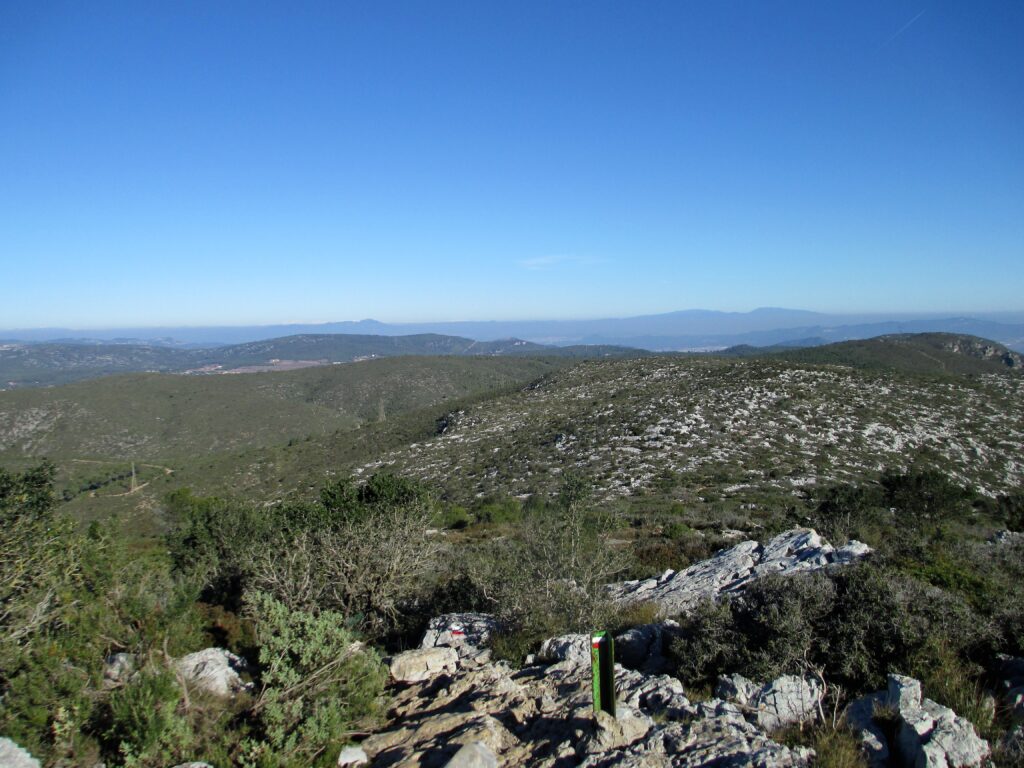
Stage 3: from Gavà to the Llobregat river, through the Ordal cherry trees.
This route, just over 23 km long, will take us following the GR 92 markings in its first section, through forests and cherry orchards in the Ordal mountains. The second part runs through artichoke fields and follows the mouth of the Llobregat River to the Hospital de Bellvitge metro stop.
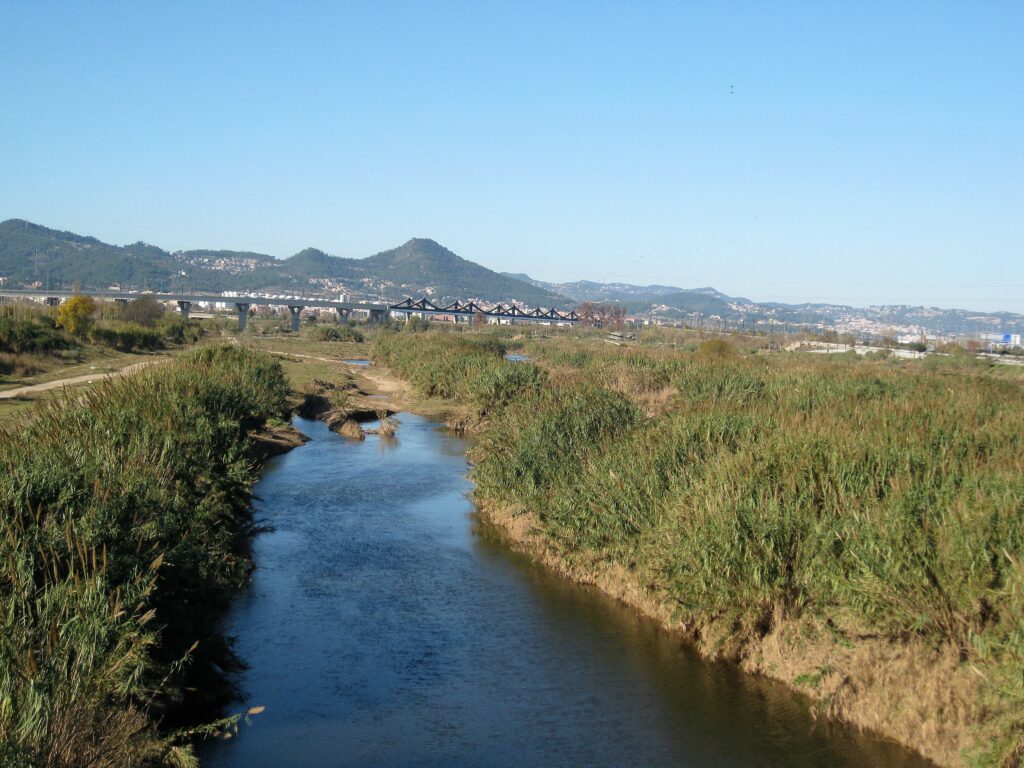
Proposal 4: The central coast of the Maresme.
Type of route: linear.
Home: Sant Pol.
Final: Tordera.
– Stage 1: from Sant Pol to Pineda de Mar.
– Stage 2: from Pineda de Mar to Santa Susanna, via Montpalau.
– Stage 3: from Santa Susanna to Tordera, through the sierra d'en Burgada.
The Maresme region is made up of modest coastal mountain ranges, but with steep slopes leading down to the coastal plain. The dominant geological material is granite, which breaks down into a special gravel, "sauló", which forms the beaches in the area. The valleys, the streams, the forests, the peaks and the agricultural areas, together with the villages that still preserve their essence, make this an area of great charm and beauty. The three routes we propose have been extracted from the book: "Maresme. 17 excursions a peu". and are accessible by the line R1 from Rodalies.

Stage 1: from Sant Pol to Pineda de Mar.
A route of about 15 km between two coastal towns where we can contemplate agricultural valleys, streams with the remains of water mills, lime kilns and the remains of a Roman aqueduct.

Stage 2: From Pineda de Mar to Santa Susanna, along the Montpalau.
We will climb two peaks, the first one, the Montpalauin the Montnegre mountain range, with Iberian and mediaeval remains. And the second, la Guàrdiawith unbeatable views. We will alternate forests of cork oaks, holm oaks and pine trees with agricultural land. A fountain and some historical remains will accompany us on the little more than 13 km of this route.

Stage 3: from Santa Susanna to Tordera, through the sierra d'en Burgada.
This route has three distinct parts: the first part is the Santa Susanna streamthe small sierra d'en Burgadawhich we will have to cross, and the Vallmanyà streamwhich forms an agricultural valley with the Can Torrent lakeIt is very interesting for wildlife watching. The almost 17 km of this stage will be completed by going through the town of Tordera and the river of the same name to find the train stop.
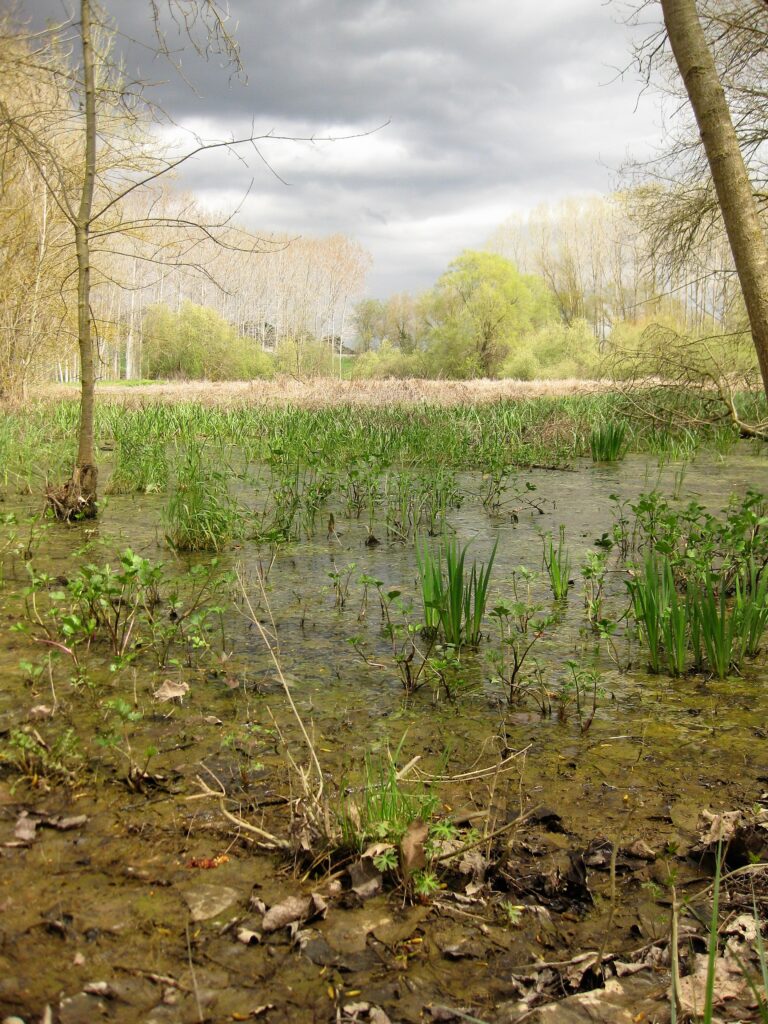
Proposal 5: The Costa Brava, along the GR92 and the "camí de ronda".
Type of route: linear.
Home: Sant Feliu de Guíxols.
Final: Blanes.
– Stage 1: from Sant Feliu de Guíxols to Tossa de Mar.
– Stage 2: from Tossa de Mar to Lloret de Mar.
– Stage 3: from Lloret de Mar to Blanes.
And then we arrive at what is known as the Costa Brava in Girona. Rocky cliffs surrounded by pine trees that will take us up and down paths cut into the rocks, some of them paved and others more exposed. Some are accompanied by ropes or metal structures to make the ascent easier and will surely leave you spellbound as you contemplate the blue of the Mediterranean. For this proposal you can travel to the starting point from Barcelona with the bus of the company Moventis (web) and the return journey can be made with the line R1 from Rodalies (web).
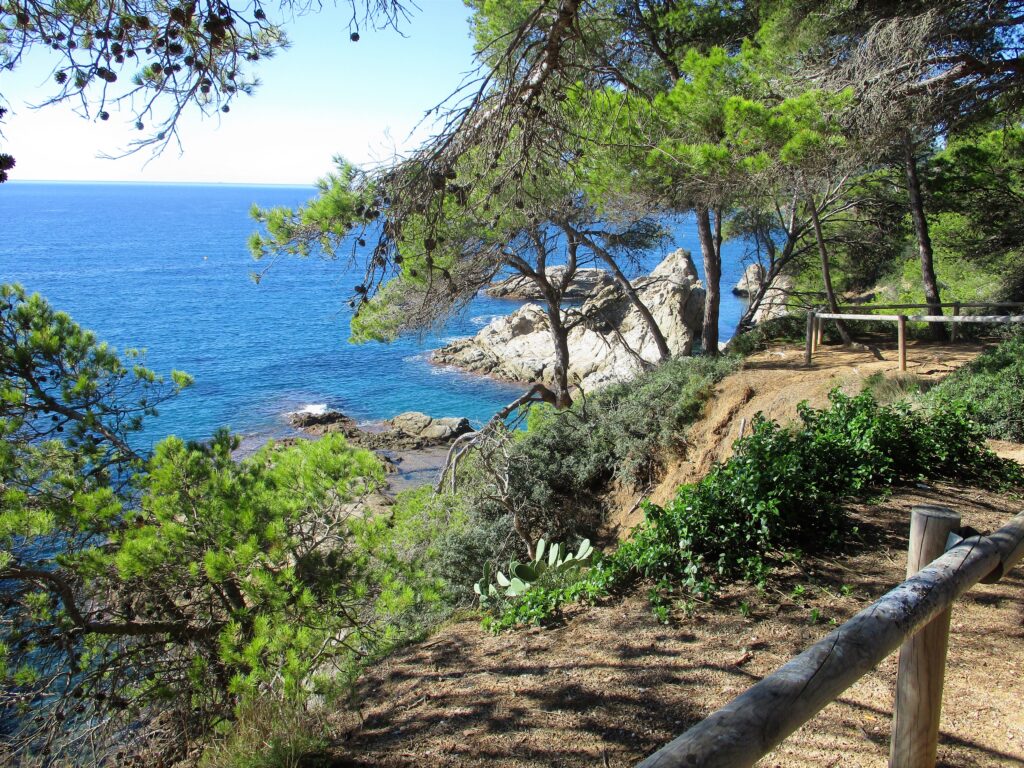
Stage 1: from Sant Feliu de Guíxols to Tossa de Mar.
This first route coincides with stage 10 of the GR92. In a little more than 20 km, we will cross the Ardenya massifwe will go up to the viewpoint of the Puig Cadiretes and we will walk along forest tracks accompanied by the cork oak forest, the dominant forest in this natural area.
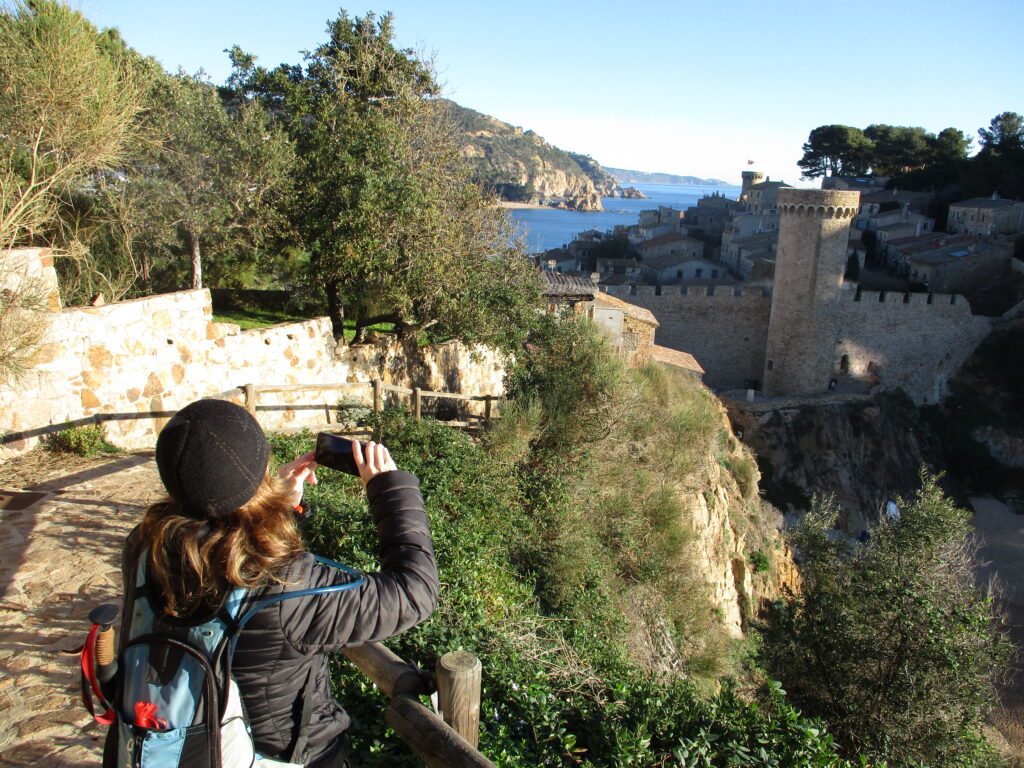
Stage 2: from Tossa de Mar to Lloret de Mar.
From the historic centre of Tossa we will walk along the coastal path, alternating with the GR 92 in a continuous up and down. We will pass by coves, cobbled paths and spectacular viewpoints. The Mediterranean will be our backdrop for almost 16 km of the route.
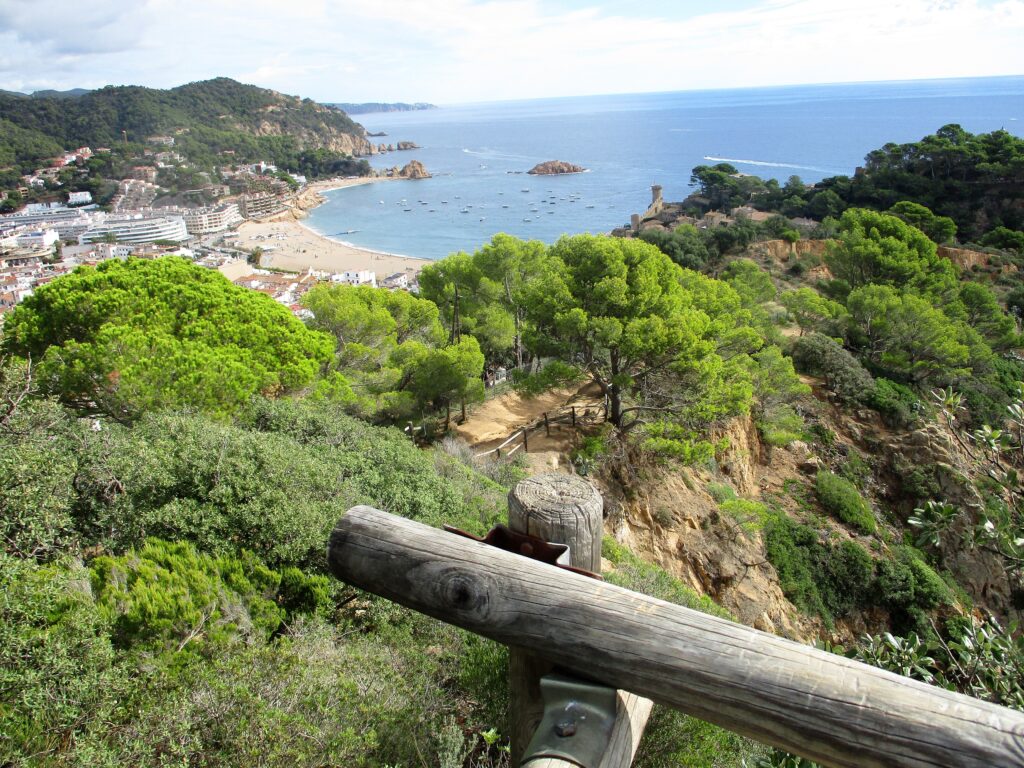
Stage 3: from Lloret de Mar to Blanes.
Coves, chapels, botanical gardens, viewpoints... will accompany us on this coastal path marked as GR 92 in its first part. The last section will take us through the town centre of Blanes until we reach the train stop.
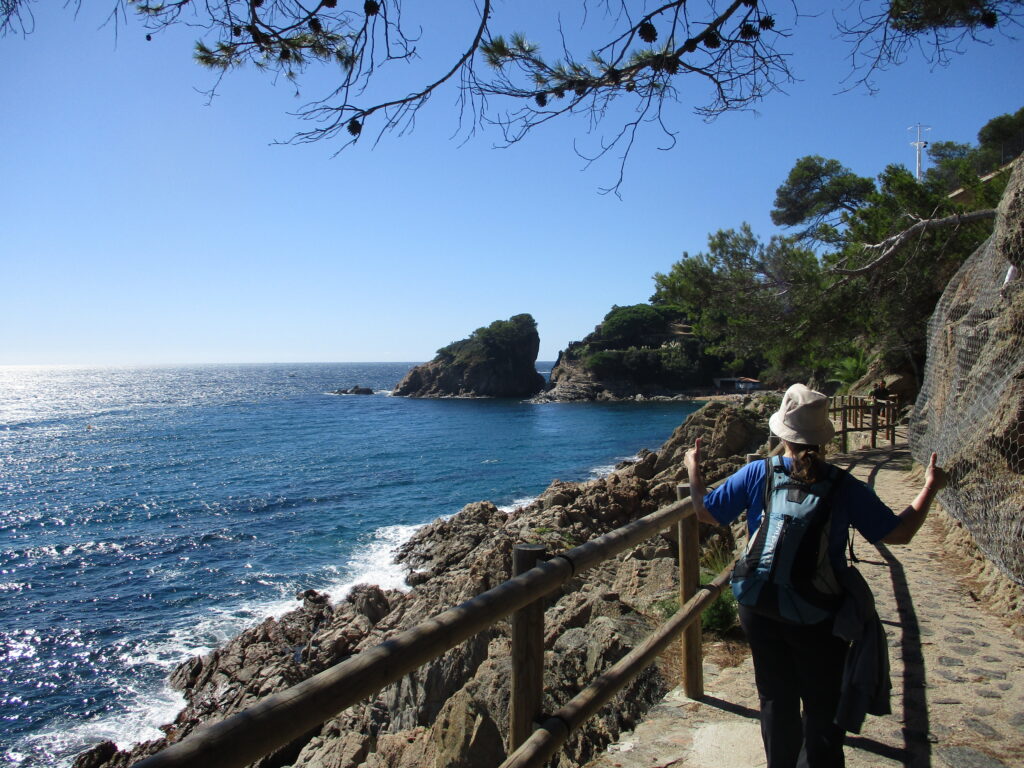
Don't miss any adventure in the Pyrenees!
